Choosing The Right Wedding White
White is white, right? Au contraire! There are many variations to this snowy color, and we've broken down the best wedding whites for each unique skin tone.
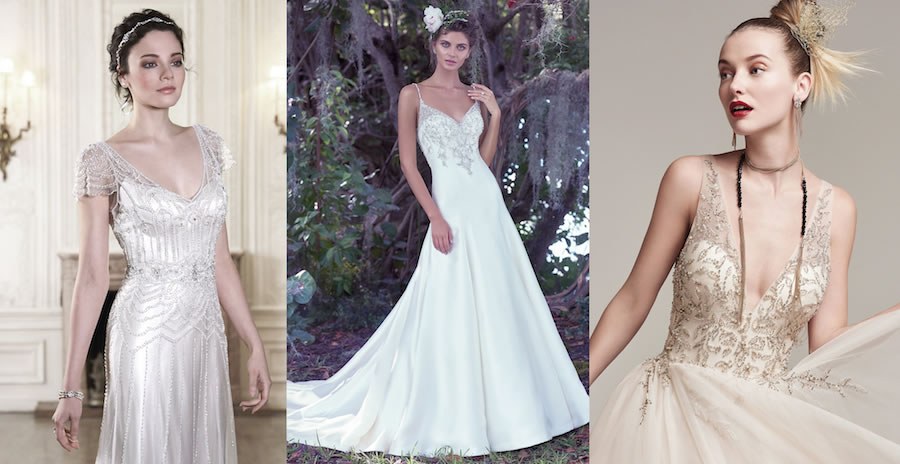
Many brides go to their first bridal salon with dreams of finding their fairytale wedding gown—and are soon disappointed. They try on gown after gown that looks beautiful on the hanger, but when they slip into them they just don’t live up to the dream. They know something isn’t quite right but they can’t put their finger on it.
If this has happened to you, then perhaps the problem isn’t the style or cut of the gown—but the color.
Although the traditional choice is a pure white wedding gown, the reality is that few women can wear pure white successfully. Many skin tones look either washed out or sallow next to unrelieved white. There are, however, numerous shades of white and cream that are ideal for wedding gowns and are still quite traditional. Choosing one of these shades can make your skin come alive and your eyes sparkle, where stark white may have given you a tired or sickly appearance.
So how do you choose the right shade of white, ivory or cream for you? If you can afford it, talk to a fashion color consultant, who will not only advise you on what shade is appropriate for your gown, but can guide you in all of your fashion choices. If not, take an honest look at your skin tone and let it be your guide.
• Fair Complexions
If you have very fair skin, a warm shade of white with a touch of yellow in it will add some warmth and a glow to your skin. A stark white will only wash you out.
• Olive Complexions
If you have sallow or olive skin, whites with a pink undertone (sometimes called cool whites) will balance things and give you a fresh, dewy look. Shades to consider might be champagne or rum white. You can also wear silk white, which is slightly less stark than pure white.
• Medium Complexions
If you have medium skin that is pinker or has blue undertones, try some of the creamier ivories and whites. These have a rich yellow undertone that will keep you from looking too flushed and red, and will complement your complexion.
• Dark Complexions
If you have a deep skin tone, almost any shade of white will look lovely against your skin. The only exception may be if you have dark skin with olive undertones—in that case, try to steer clear of yellow-ivory shades.
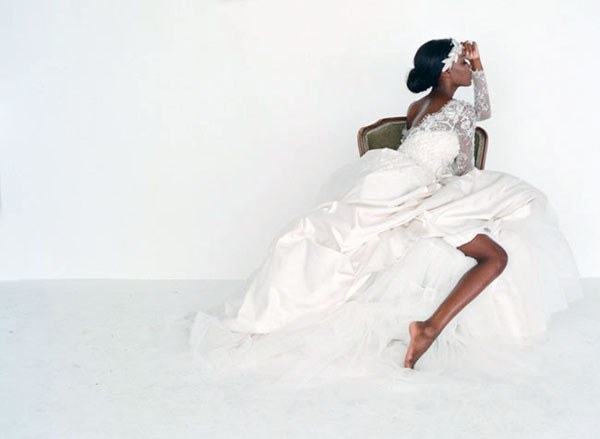
What are the Many Shades of White?
The names given to colors can be confusing. Here are some of the most commonly used names for white, which are standard in the industry:
• Stark White or Bright White
The purest, starkest white almost glows, and is particularly striking against dark skin. It is also the most difficult shade to wear, as it can drain the color from fair and medium skin tones.
• Champagne White
This is a beautiful white with a slight pink undertone. In photos and low light, it looks nearly white but adds richness to olive or sallow skin. A slightly deeper version of this shade is sometimes called Rum White.
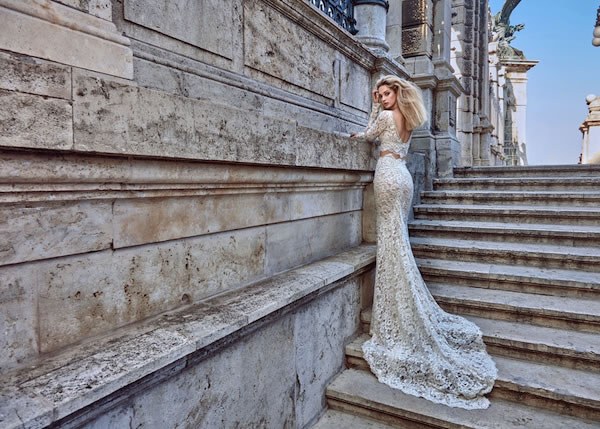
• Ivory
There is a great deal of variation in shades of ivory, which is the most universally flattering hue for brides. Be sure to hold a color swatch of any ivory next to your face to see how it plays against your skin and eye color. Some have creamy, warm undertones while others have a slightly pinker tint. Eggshell is one of the lighter shades of ivory.
• Candlelight
This is a somewhat deeper shade of ivory with a beige-cream undertone. The name refers to the fact that it is meant to appear white under candlelight. It’s especially fitting for evening weddings, when its richness and depth will be set off to best advantage.
• Ecru
The deepest shade of ivory available, ecru borders on tan or beige. The name refers to the unbleached or raw color of linen. If you are looking for something that is less traditional and has some depth, ecru is worth trying out.
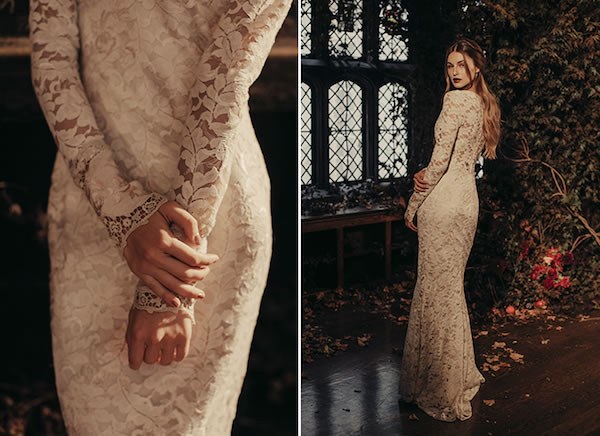
Beyond White
More and more brides today are turning away from traditional whites and ivories, a trend that will continue to grow in the future. After all, the notion that white denotes purity or virginity only started in the 1800s, and has since fallen away—today’s bride can wear any color she likes. Nowadays, the wedding gown signifies joy and celebration, and should reflect the bride’s taste.
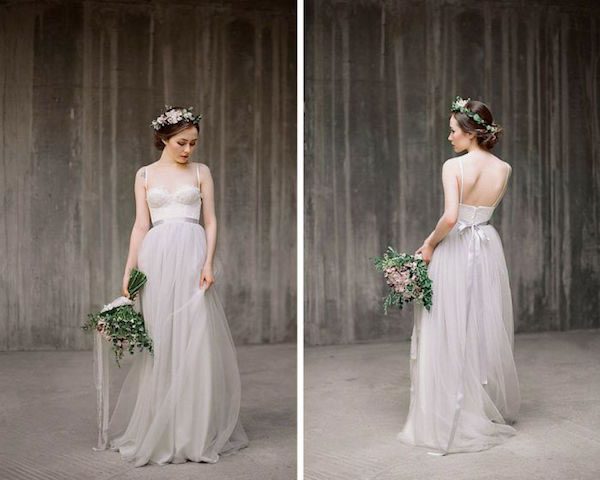
Pastels are a popular alternative that can perfectly complement the bride’s complexion. Sheerest pinks, icy blues and butter-cream yellows are all elegant choices. A pale gold or shimmering silver gown is also a sophisticated option for an evening wedding, when the most formal of attire is expected.
If you are set on a white gown, however, you don’t have to be limited to all-over white. Consider a dress of white lace with a silk or satin underlay in another color for an interesting contrast. Colorful embellishments—sequins, beading or embroidery—also adds luxurious detail. A white gown trimmed at the neckline in a richer tone can bring color to the face while breaking up the starkness of the dress.
Whatever color you choose for your wedding dress, if you take into account how it looks against your skin as well as how it works with the style of your gown, you’ll glow on your wedding day!
–Contributed by Lori Hilliard
Lori Hilliard is a freelance writer and semi-pro bridesmaid who wore candlelight beige for her first marriage and black and white for her final one.
Are we friends yet? Join MyGuide for more goodness!
Some clients may have paid to be placed in our editorial and some of these links may be affiliate; however, we never include a venue, vendor, or product unless they have a proper place here. This is part of our Core Values. We create our website first and foremost to be good for the couples using it to plan their Big Day. We won't stray from that for a few advertising dollars. #scoutshonor

